It deserves to be remembered as one of the most significant seasons in the history of the Pittsburgh Steelers. As it was known in-house: the year of re-establishing the mind-set. The purpose was to bring the franchise back toward its roots – put simply, getting back to physical over finesse – because by the end of 2003 it was apparent the Steelers had lost their way. But along the path of re-establishing the mind-set in an effort to re-capture their past, the Pittsburgh Steelers unlocked the door to their future.
The first step was acquiring the key to that door. That happened on April 24, 2004, at the Theater at Madison Square Garden in New York City, the site of that year's NFL Draft.
The card the Steelers turned in when they had decided on their first-round draft pick read:
R-o-e-t-h-l-i-s-b-e-r-g-e-r, and no one at the time could have had any idea how right they were.
It has been 18 years now, and the point is inarguable. There are two Lombardi trophies in their possession that otherwise would belong to another. The NFL record book is littered with the same name that the Steelers had printed on that index card, and in his business, greatness is measured by rings and records, in that order, and he has both. Today, Ben Roethlisberger announced his retirement from the Pittsburgh Steelers and the National Football League, and he does so as a significant and dynamic player in the history of his sport.
SAINT VINCENT COLLEGE, Summer of 2004
The re-establishment of the mind-set packed up and moved its headquarters to the Laurel Highlands for a few weeks of togetherness on a small college campus. Coach Bill Cowher was conducting a consistently physical and competitive camp, a camp that already had claimed one of Charlie Batch's knees. The unintended consequence to a season-ending injury to the team's veteran backup quarterback was that it moved the rookie to the No. 2 spot on the depth chart. With real games still some months away, the promotion meant nothing except that it provided the rookie with more reps in practice, and more reps with better players and against better competition.
A training camp practice on a Saturday afternoon can devolve into looking exactly like what it is: a padded workout at the end of a long, draining week of football. Maybe this one is being remembered as different because it actually was, or maybe this one is being remembered as different because it opened some eyes. The gem was buried within a single snap of an otherwise tedious practice, but it was there. It was a microcosm of what would be on display through the next 18 NFL seasons that included 249 regular season games and 23 more in the playoffs, plus all of the goodies he squeezed into those 272 professional appearances.
It was 11-on-11. The rookie took the snap and dropped into the pocket. Even though hitting the quarterback is verboten, as the play unfolded the rookie didn't immediately see anything downfield that attracted his eye, so he first drifted to the right and then broke into a dead run toward the sideline. Suddenly, angling across from the left, some 20-plus yards downfield but actually farther away because of the angle, was a possibility. Zamir Cobb, an undrafted rookie receiver from Temple was finding himself on the field with Roethlisberger a lot, but what was unfolding was the kind of throw rookie quarterbacks are taught to resist by NFL coaches. It was late in the play, across the body, and into the middle of the field, where professional defensive backs love to lurk.
This proved there are exceptions to every rule. Still on a dead run, the rookie uncoiled his right arm and fired a laser to the exact spot where a sprinting Cobb met the ball in stride in the middle of the field. I was standing next to Tunch Ilkin, whose football gravitas included blocking for two different Hall of Fame quarterbacks over a 14-year NFL career, and we weren't six-feet from where the rookie released the ball. After Cobb completed the catch, and the whistle blew to end the play, I looked at Tunch, likely with mouth agape.
His response was the ah-ha moment: "Brett Favre."
Take a look at Steelers QB Ben Roethlisberger's first training camp at Saint Vincent College
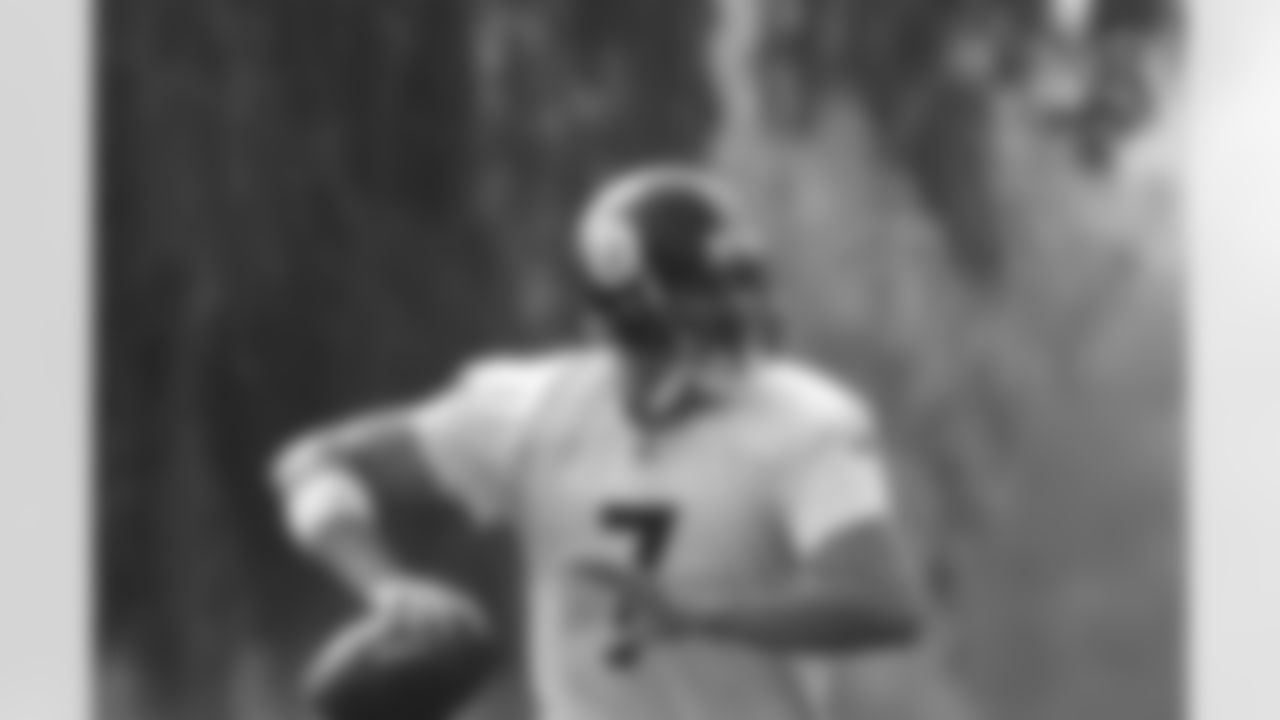
Action shot of Pittsburgh Steelers quarterback Ben Roethlisberger (7) during his first training camp at Saint Vincent College.

Action shot of Pittsburgh Steelers quarterback Ben Roethlisberger (7) during his first training camp at Saint Vincent College.
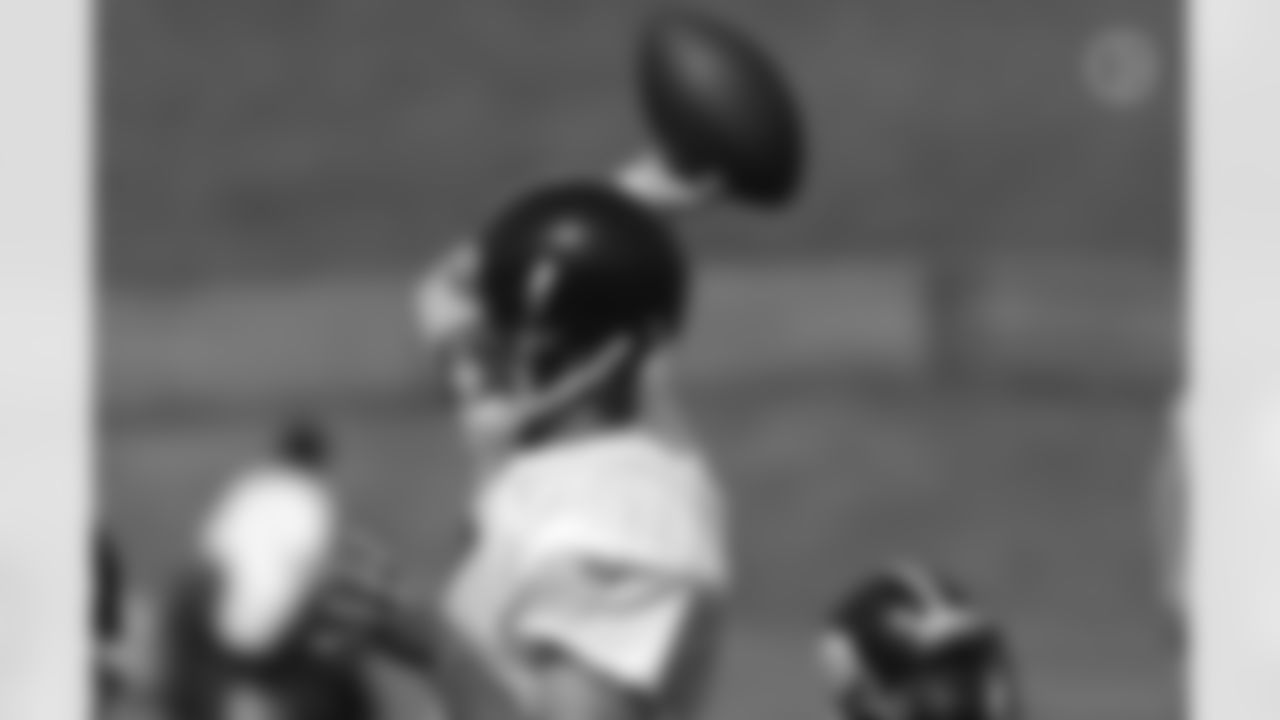
Action shot of Pittsburgh Steelers quarterback Ben Roethlisberger (7) during his first training camp at Saint Vincent College.

Action shot of Pittsburgh Steelers quarterback Ben Roethlisberger (7) during his first training camp at Saint Vincent College.

Action shot of Pittsburgh Steelers quarterback Ben Roethlisberger (7) during his first training camp at Saint Vincent College.
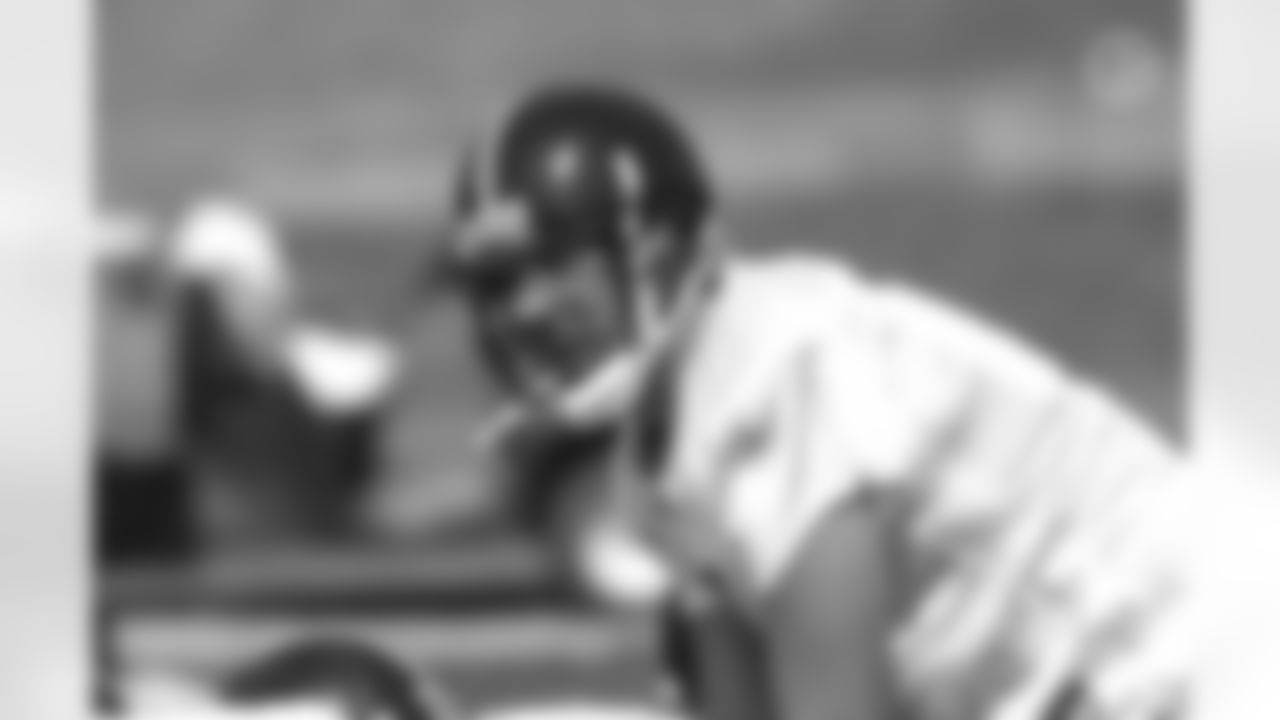
Action shot of Pittsburgh Steelers quarterback Ben Roethlisberger (7) during his first training camp at Saint Vincent College.
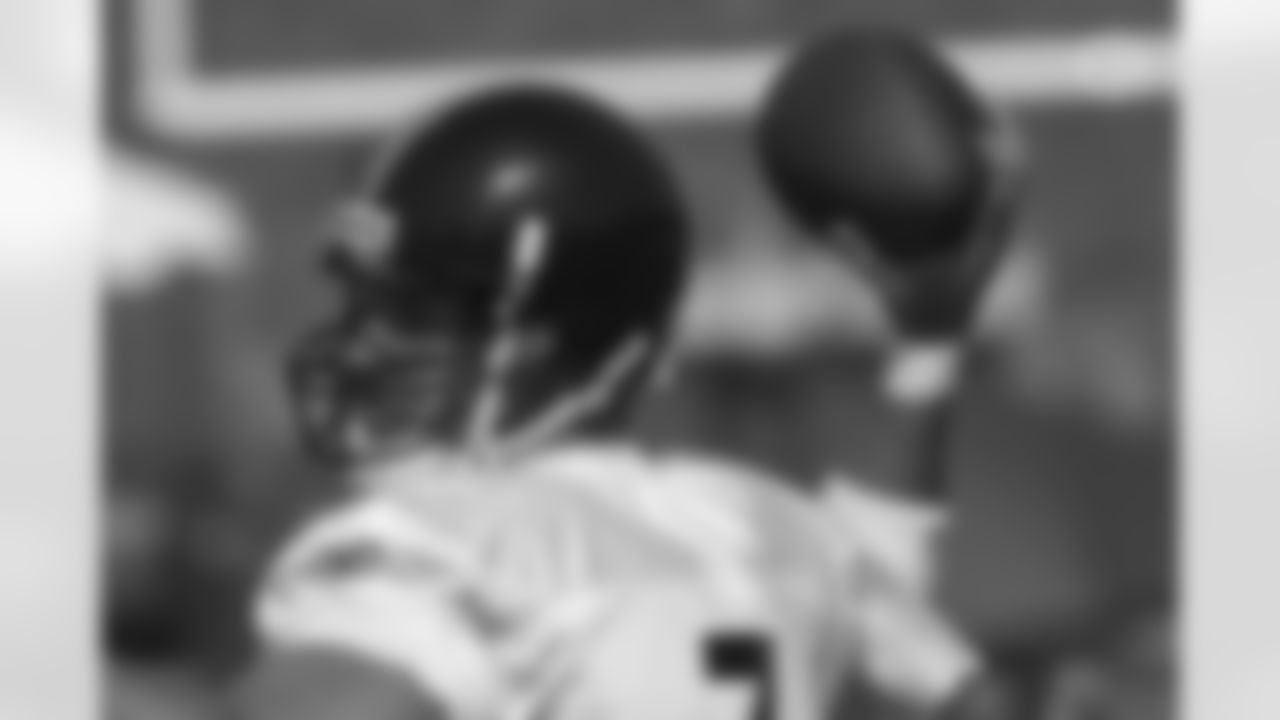
Action shot of Pittsburgh Steelers quarterback Ben Roethlisberger (7) during his first training camp at Saint Vincent College.

Action shot of Pittsburgh Steelers quarterback Ben Roethlisberger (7) during his first training camp at Saint Vincent College.

Action shot of Pittsburgh Steelers quarterback Ben Roethlisberger (7) during his first training camp at Saint Vincent College.

Action shot of Pittsburgh Steelers quarterback Ben Roethlisberger (7) during his first training camp at Saint Vincent College.
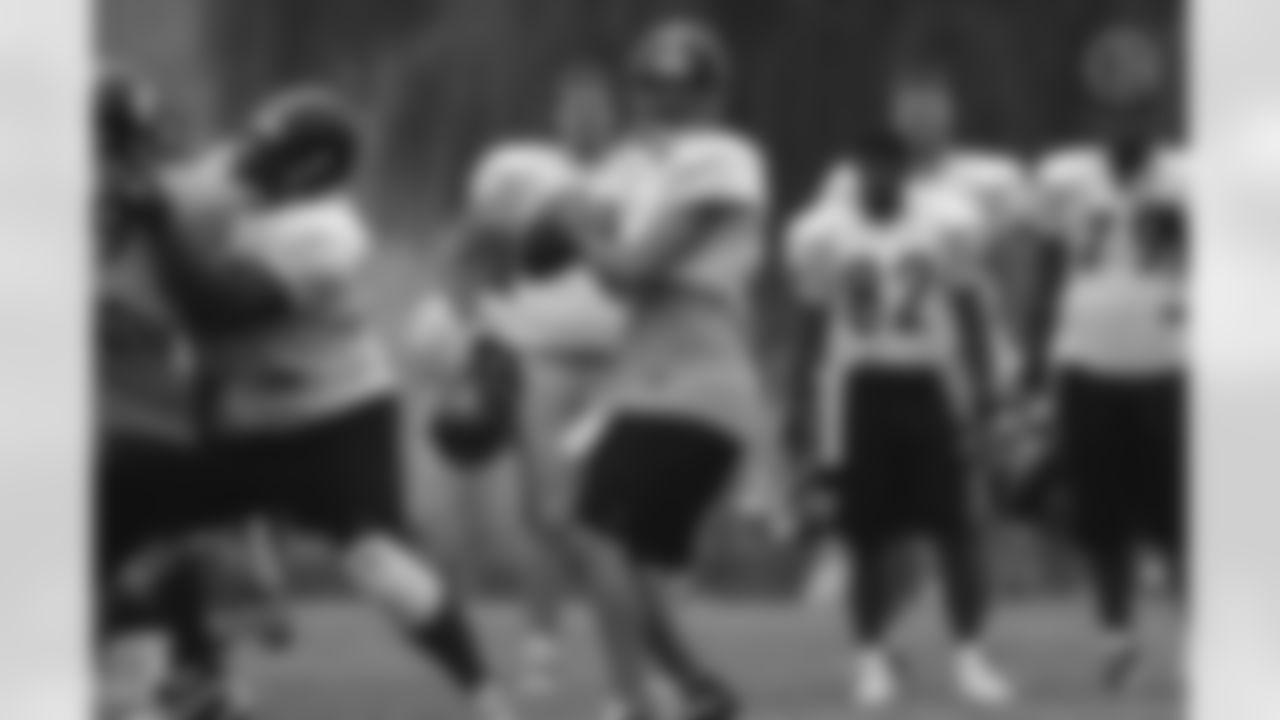
Action shot of Pittsburgh Steelers quarterback Ben Roethlisberger (7) during his first training camp at Saint Vincent College.

Action shot of Pittsburgh Steelers quarterback Ben Roethlisberger (7) during his first training camp at Saint Vincent College.
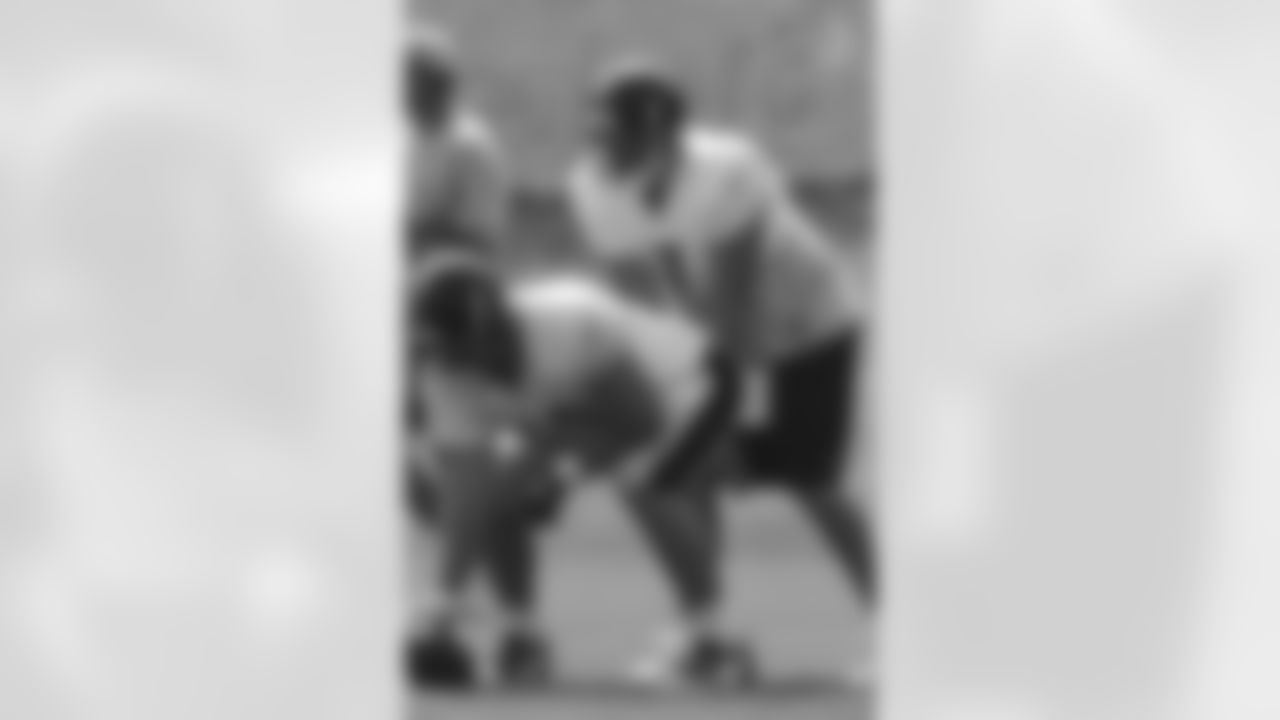
Action shot of Pittsburgh Steelers quarterback Ben Roethlisberger (7) during his first training camp at Saint Vincent College.

Action shot of Pittsburgh Steelers quarterback Ben Roethlisberger (7) during his first training camp at Saint Vincent College.

Action shot of Pittsburgh Steelers quarterback Ben Roethlisberger (7) during his first training camp at Saint Vincent College.
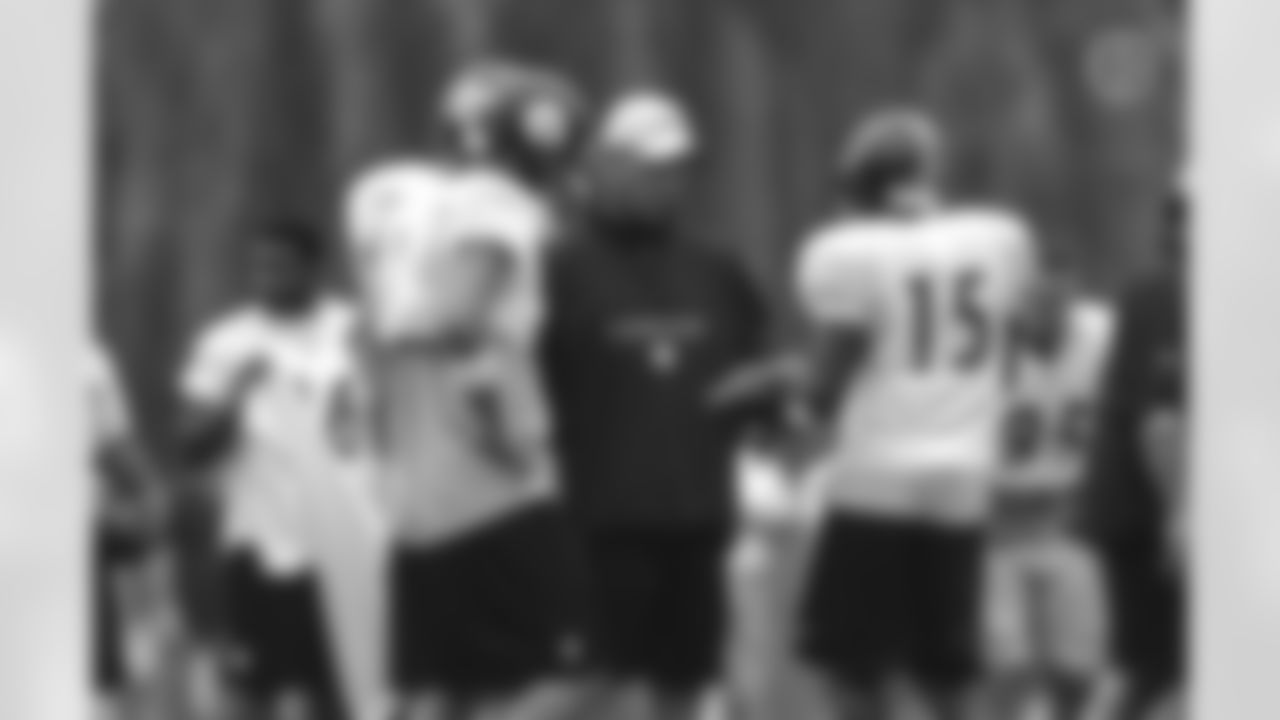
Action shot of Pittsburgh Steelers quarterback Ben Roethlisberger (7) during his first training camp at Saint Vincent College.
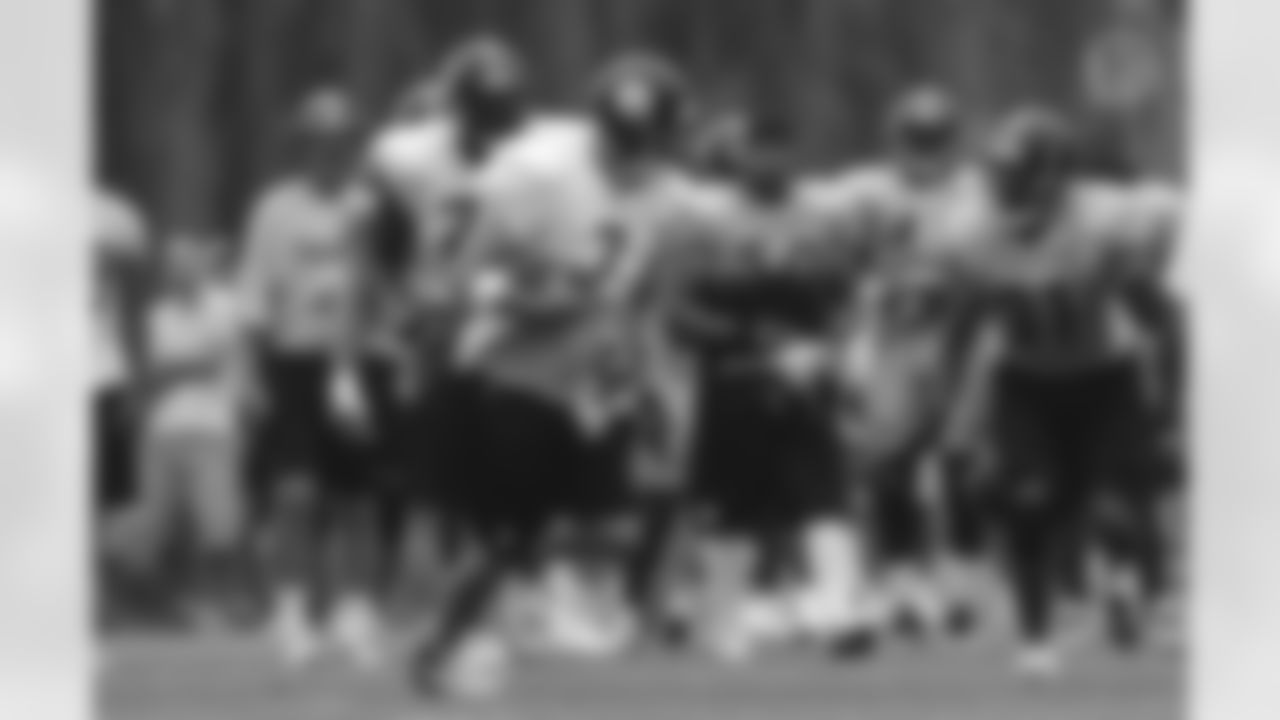
Action shot of Pittsburgh Steelers quarterback Ben Roethlisberger (7) during his first training camp at Saint Vincent College.

Action shot of Pittsburgh Steelers quarterback Ben Roethlisberger (7) during his first training camp at Saint Vincent College.
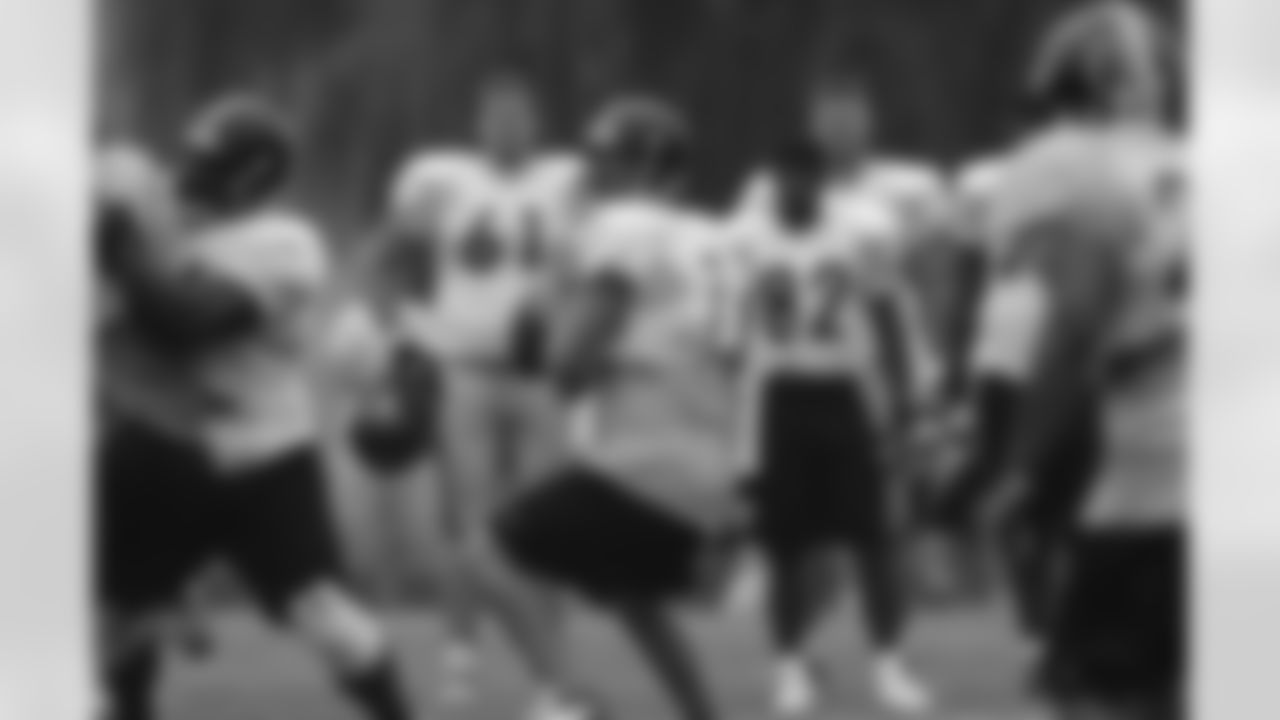
Action shot of Pittsburgh Steelers quarterback Ben Roethlisberger (7) during his first training camp at Saint Vincent College.

Action shot of Pittsburgh Steelers quarterback Ben Roethlisberger (7) during his first training camp at Saint Vincent College.

Action shot of Pittsburgh Steelers quarterback Ben Roethlisberger (7) during his first training camp at Saint Vincent College.

Action shot of Pittsburgh Steelers quarterback Ben Roethlisberger (7) during his first training camp at Saint Vincent College.
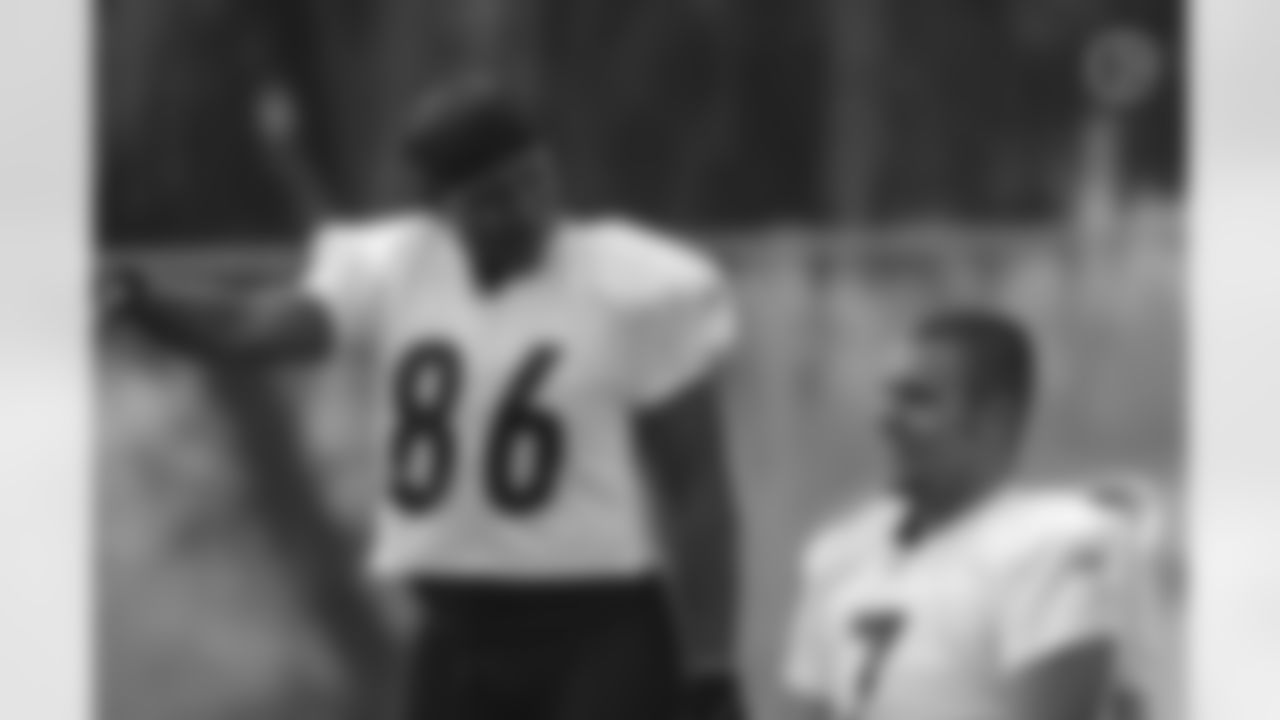
Action shot of Pittsburgh Steelers quarterback Ben Roethlisberger (7) during his first training camp at Saint Vincent College.
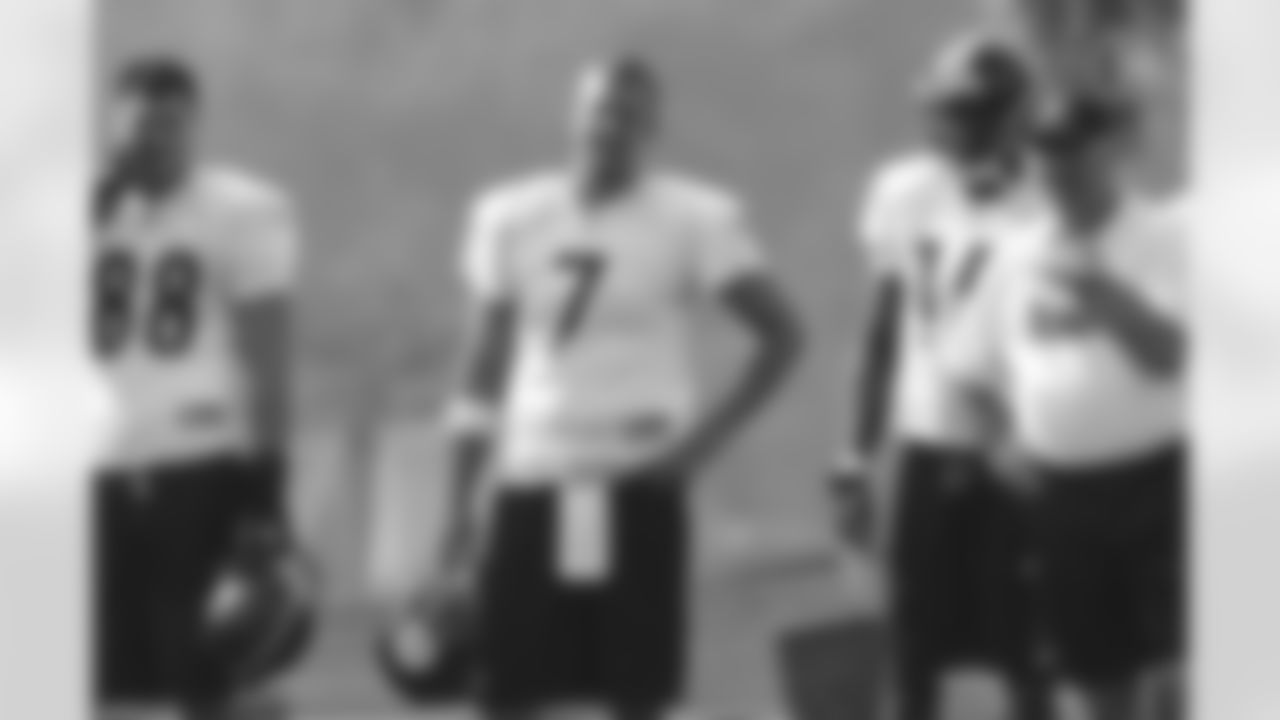
Action shot of Pittsburgh Steelers quarterback Ben Roethlisberger (7) during his first training camp at Saint Vincent College.
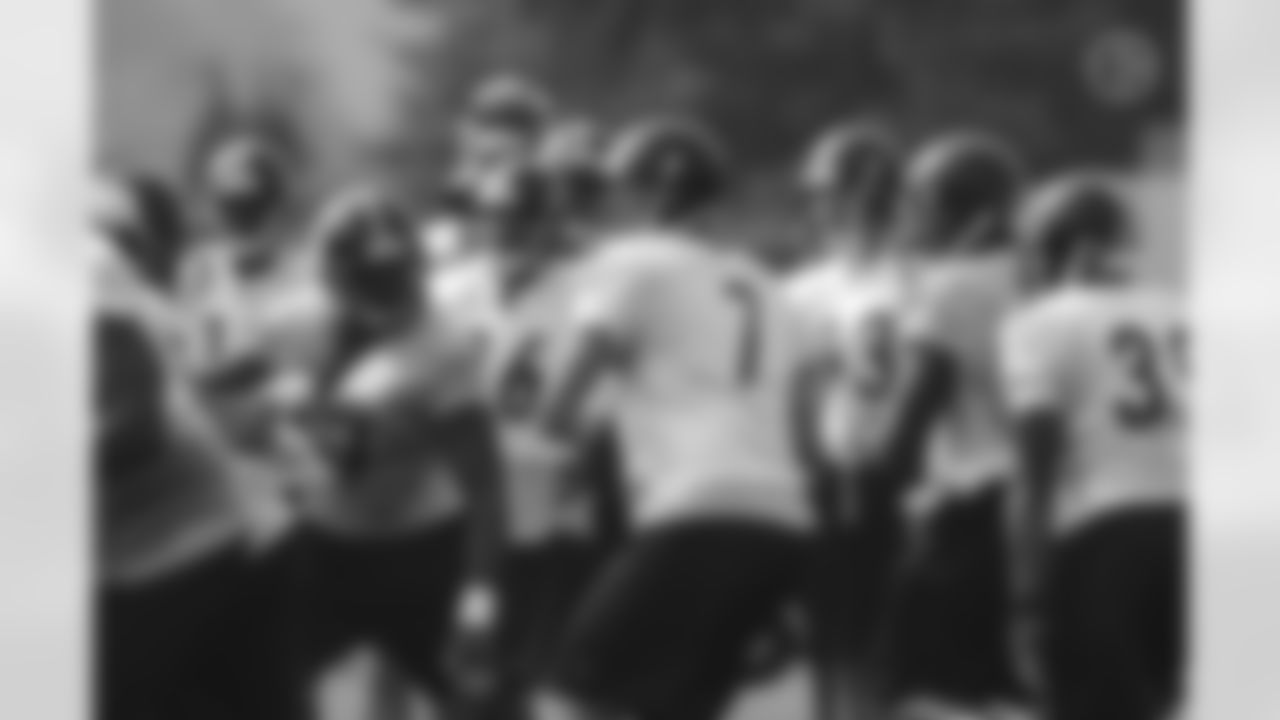
Action shot of Pittsburgh Steelers quarterback Ben Roethlisberger (7) during his first training camp at Saint Vincent College.

Action shot of Pittsburgh Steelers quarterback Ben Roethlisberger (7) during his first training camp at Saint Vincent College.
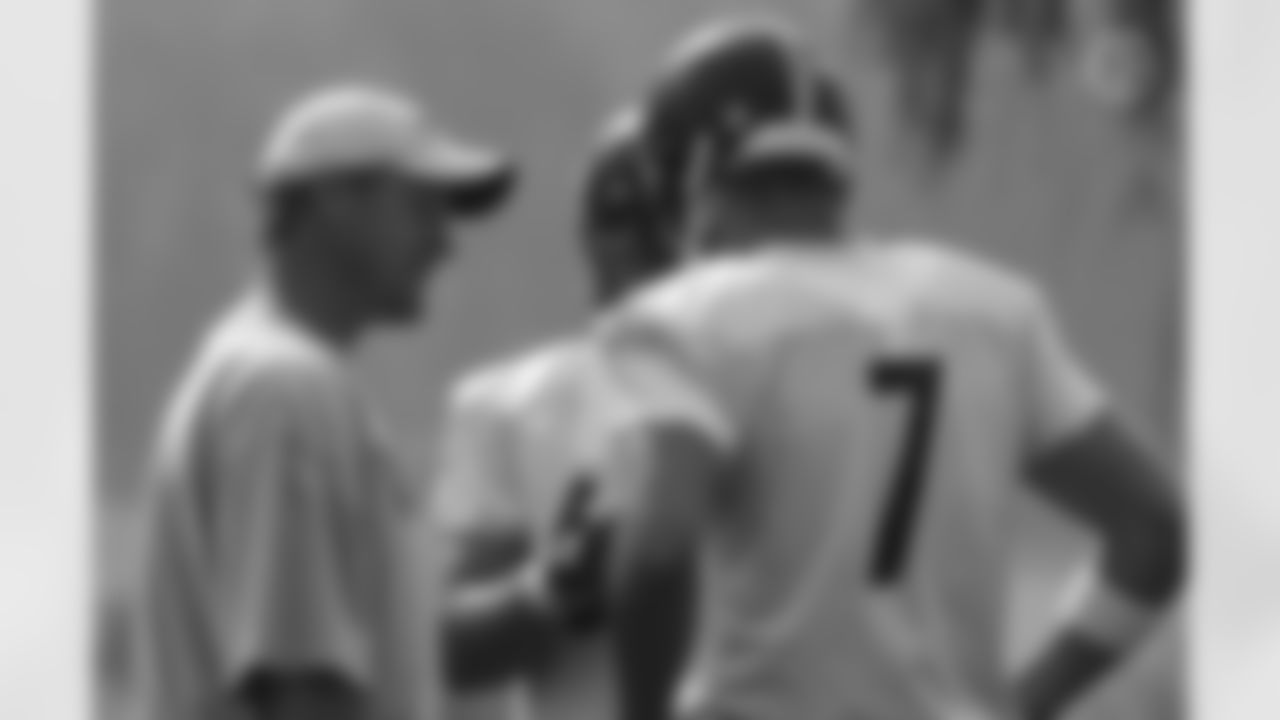
Action shot of Pittsburgh Steelers quarterback Ben Roethlisberger (7) during his first training camp at Saint Vincent College.

Action shot of Pittsburgh Steelers quarterback Ben Roethlisberger (7) during his first training camp at Saint Vincent College.

Action shot of Pittsburgh Steelers quarterback Ben Roethlisberger (7) during his first training camp at Saint Vincent College.
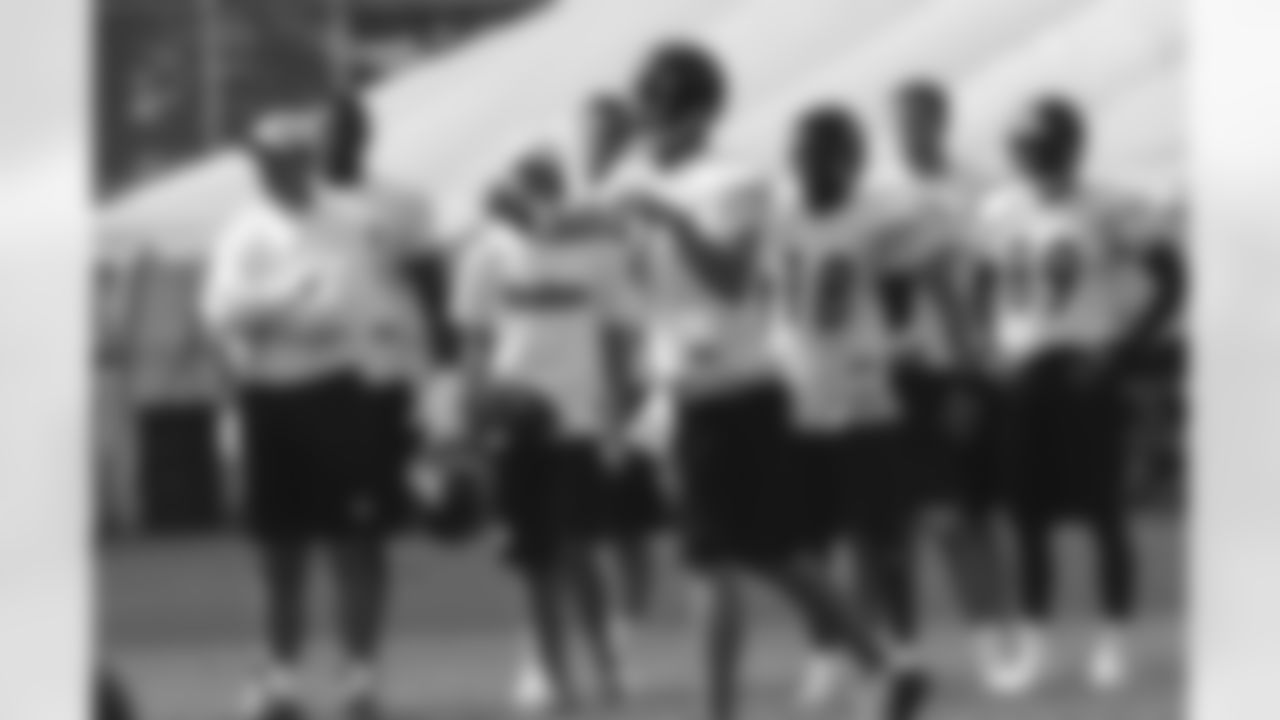
Action shot of Pittsburgh Steelers quarterback Ben Roethlisberger (7) during his first training camp at Saint Vincent College.
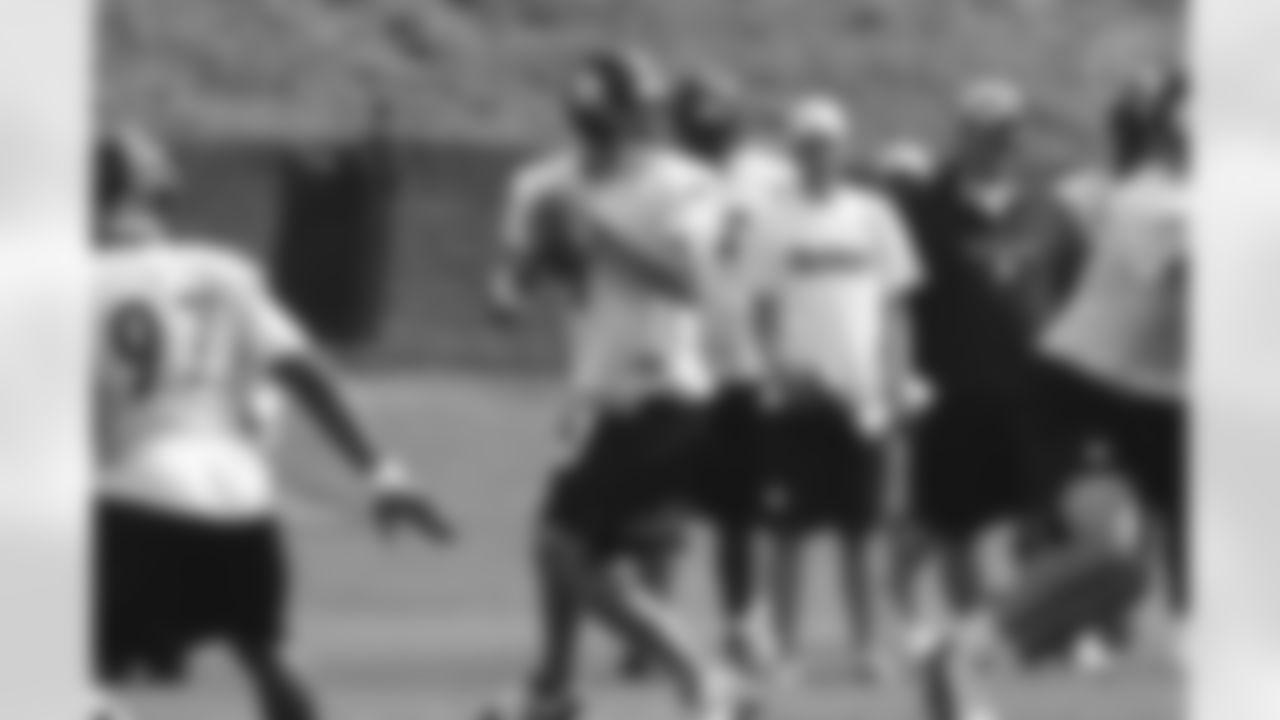
Action shot of Pittsburgh Steelers quarterback Ben Roethlisberger (7) during his first training camp at Saint Vincent College.
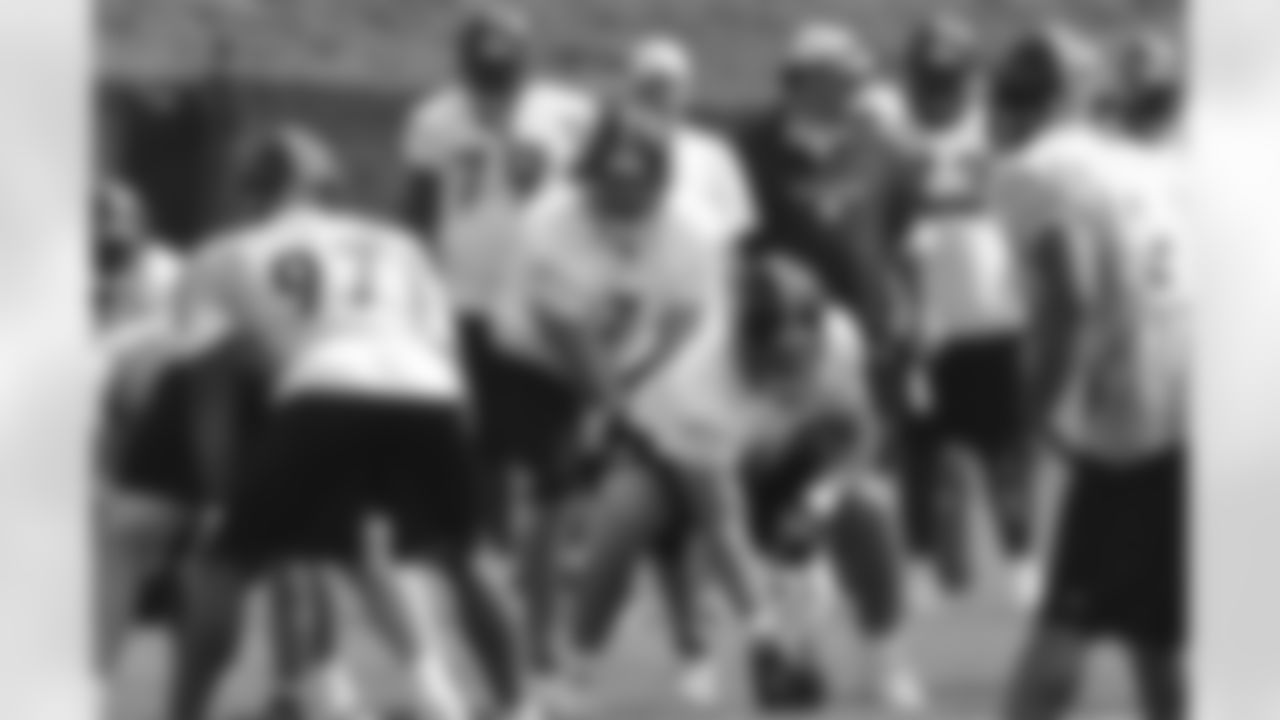
Action shot of Pittsburgh Steelers quarterback Ben Roethlisberger (7) during his first training camp at Saint Vincent College.
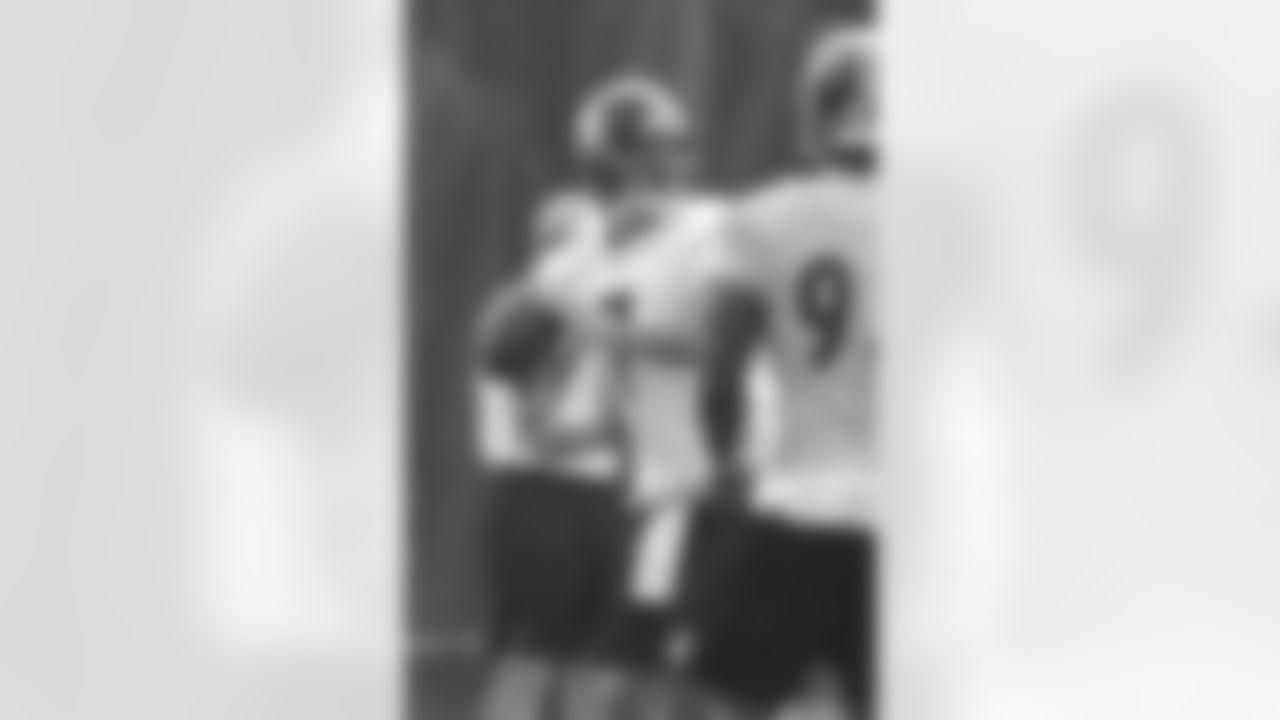
Action shot of Pittsburgh Steelers quarterback Ben Roethlisberger (7) during his first training camp at Saint Vincent College.
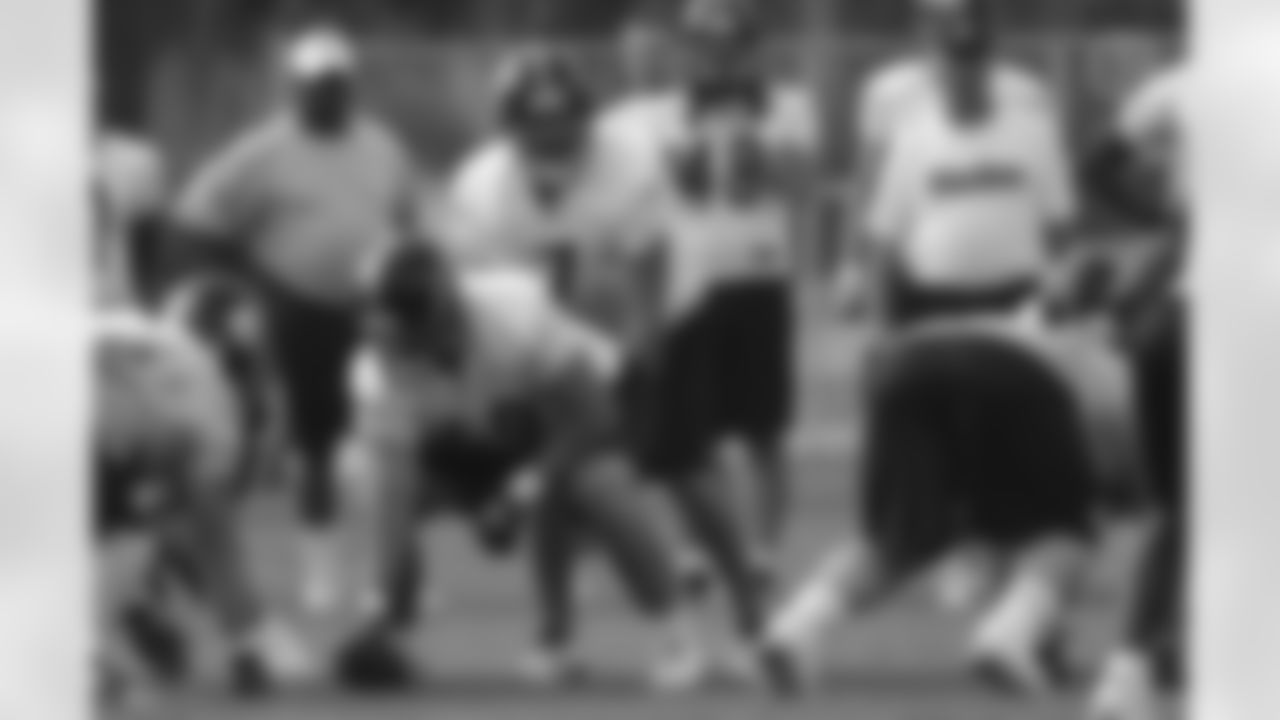
Action shot of Pittsburgh Steelers quarterback Ben Roethlisberger (7) during his first training camp at Saint Vincent College.
ACTUALLY, IT'S THE OPPOSITE OF EXCITING
By the time the 2004 regular season opened, with the Steelers' assignment being a visit from the Oakland Raiders, the rookie had faded into the background. Ben Roethlisberger was Tommy Maddox's backup, and there wasn't even a hint of doubt about that pecking order. The Steelers won their opener, 24-21, because they had re-established the mind-set to the tune of three rushing touchdowns, no turnovers, four takeaways, and three sacks. Victory Monday had a nostalgic feel to it.
But the next Sunday, during a game in Baltimore, Maddox was injured while attempting to pass, and nobody knew how lucky the Steelers were that Roethlisberger was the next man up. Absolutely nobody knew, not even the team's two-time first-team All-Pro left guard. On Monday, the day after what ended up being a loss to the Ravens, Alan Faneca was offered up to the media in the way teams tend to present their most stable player in times of maximum instability.
But not even Faneca had the wherewithal to toe the company line when he was asked whether he found it "exciting" to get to see firsthand what the team's No. 1 pick, the rookie quarterback, could do in an NFL regular season game.
"Exciting?" is what Faneca said when what he clearly meant was, "Are you out of your %$@ mind?" Then he continued, "No, it's not exciting. Do you want to go work with some little young kid who's just out of college? … He's a No. 1 pick, he's fresh out of college, and that's the big thing. He's throwing in a new offense. He's not in that Miami, Ohio, offense that he sat in for three years, four years. He has to learn that, too, so there's a lot to soak in."
Roethlisberger established himself as a quick learner. In his first start – on the road vs. Miami in a game delayed by a hurricane and played in the soggy aftermath – the Steelers won, 13-6, by running the football, controlling the clock, and playing stingy defense, but in the fourth quarter we got a glimpse. Roethlisberger took the Steelers on a seven-play, 61-yard drive for the clinching touchdown in the second half of the fourth quarter, and he completed 4-of-5 for 48 yards and the 7-yard touchdown to Hines Ward. Roethlisberger converted a third-and-12 with an 18-yard completion, and a third-and-4 with a 20-yard completion. Since the Steelers never trailed, it wasn't a comeback victory, but the rookie looked special his first time out of the gate.
And so it went. Week after week after week. After Miami, they were 2-1. After a 24-20 win in Dallas where Roethlisberger was the offensive catalyst for 14 fourth-quarter points that erased a 20-10 deficit, it became 5-1. Then 7-1 following back-to-back wins over two unbeatens – New England and Philadelphia – in which he completed 29-of-42 (69 percent) for 379 yards, with four touchdowns, one interception, and a rating of 99.2, while out-playing Tom Brady (72.9 rating) and Donovan McNabb (55.7) in back-to-back weeks. The regular season ended with 15-1 for the Steelers and 13-0 for Roethlisberger. His rookie season officially ended in the AFC Championship Game.
THE PROMISE
The postmortem of Patriots 41, Steelers 27, the immediate aftermath of another season ended one step short of the ultimate destination was somber, and then the next day it drifted into heartbreaking when Hines Ward wept openly when discussing his part in the team's continued failure to get Jerome Bettis to a Super Bowl. Ward made it sound likely that Bettis would retire during the offseason, but what wasn't public knowledge was the team's youngest player had made a promise to its decorated veteran.
Whichever end of the exchange is deemed most significant – whether it's that a young player actually promised a Super Bowl to a 12-year veteran, or that the veteran thought so much of it that it helped sway him to a 13th – Roethlisberger had flashed (as a 22-year-old) the kind of leader he would turn out to be.
The 2005 regular season wasn't the romp that the previous year's had been. Roethlisberger recorded his first perfect passer rating (158.3) in the opener against Tennessee during which he completed 9-of-11 for 218 yards, with two touchdowns and no interceptions. His first regular-season loss came at Heinz Field to the Patriots on a last-second field goal. The Steelers defeated the Bengals in Cincinnati in a game in which Roethlisberger attempted only 14 passes, but they lost to the same Bengals team in a game that clinched the division title for Cincinnati when he attempted 41 passes. There was a learning curve when it came to utilizing Roethlisberger within the offensive game plans, but by the end of the regular season is seemed as though the Steelers had found the sweet spot.
'ON THE ROAD' TO LOMBARDI NO. 1
The Steelers opened the 2005 postseason as the No. 6 seed in the AFC, which sent them to Paul Brown Stadium for the rubber match vs. the Bengals. Cincinnati would build a couple of 10-point leads in the first half, but on each occasion Ben Roethlisberger and the offense answered with a touchdown drive to tighten things up. The second of those responses came late in the first half when Roethlisberger was 3-for-3 for 74 of the drive's 76 yards, plus the touchdown to Hines Ward. Roethlisberger had been a liability in the 2004 playoffs, but he opened his second go-round in the postseason by completing 14-of-19 for 208 yards, with three touchdowns and no interceptions in a 31-17 win.
Next up for the Steelers was a return engagement vs. the top-seeded Indianapolis Colts inside the RCA Dome, and if Roethlisberger didn't necessarily have to out-play Peyton Manning, he would have to perform above his level of experience. It started with handling the din inside the dome and progressed from there to taking advantage of the opportunities presented by the Colts defense while not making any of the mistakes that would give Manning any extra possessions or short fields for those extra possessions.
Following the opening kickoff, Roethlisberger completed 6-of 7-for 76 yards and a touchdown, the only incompletion was a drop, and his first two strikes against Tony Dungy's famed cover-2 were to tight end Heath Miller over the middle, precisely at the defense's soft underbelly.
The Colts went three-and-out on each of their opening two possessions before Roethlisberger struck again. On a third-and-10 from the Pittsburgh 39-yard line, he found Ward for 45; two plays later, it was another strike to Miller over the middle and it was 14-0 with 3:12 still to play in the first quarter. The first half ended with the Steelers holding a 14-3 lead, and to everyone not a card-carrying member of the Peyton Manning Fan Club, the best quarterback on the floor of the dome had been the one wearing No. 7 in white. By the time the game ended, Roethlisberger had completed a higher percentage than Manning, threw for more touchdowns, been sacked fewer times, and had a higher passer rating. Oh, and he had one more tackle.
Steelers fans who have visited training camp, or media members who watched any part of those camp-ending softball games pitting the offense vs. the defense, or even people who have shared a foursome with Roethlisberger have some idea what a ridiculously maniacal competitor he is. It can be the pre-practice 40-yard long-toss into a garbage can, or a spirited game of hitting the crossbar with a thrown football from 30 yards away, or a teammate trying to blast a softball past him when he was at shortstop, or standing over a 6-foot downhill putt on No. 18, or every snap of every football game in which he's involved, Roethlisberger wants to WIN. High stakes, low stakes, no stakes. W-I-N.
With less than 80 seconds remaining before the biggest upset of the 2005 season became official, a loose football was bouncing about the RCA Dome rug, and Colts safety Nick Harper was closing on a dead run. The stakes couldn't have been higher, and Roethlisberger delivered. Initially, he played a little rope-a-dope with Harper, and by doing that he kept himself clear of the Colts linemen who were trying to get in front of Harper and escort him to the opposite end zone. Then as Harper got closer, Roethlisberger waited for a clear shot at one of Harper's legs, and then he made his move. He got enough, and Harper hit the turf at the Indianapolis 42-yard line. Roethlisberger won that snap, and by doing so he gave the Steelers defense a chance to make a play to preserve his team's 21-18 lead, or at the very least, he gave Colts kicker Mike Vanderjagt a chance to yak a field goal attempt. When Vanderjagt complied, it was on to Denver to face the No. 2 seed Broncos for the AFC's spot in Super Bowl XL.
Young quarterbacks in such high-pressure situations have been known to experience difficulty swallowing, and the Broncos deployed their defense accordingly. Facing an alignment loaded up to stop the run, Roethlisberger got out his carving knife and the outcome was sealed by halftime. In fashioning a 10-0 lead, Roethlisberger was 7-for-8 for 89 yards and the touchdown, and on the Steelers' other two touchdown drives of the half he completed 6-of-9 for 91 yards and another score. The 23-year-old quarterback finished the first half 13-of-17 (76.5 percent) for 180 yards, with two touchdowns, no interceptions, and a rating of 149.1. The Steelers converted 63 percent on third down, they were 4-for-5 in the red zone, and their first four possessions of the game ended field goal, touchdown, touchdown, touchdown, for a 24-3 lead. As the teams walked to their locker rooms at halftime, the only statistical categories in which the Broncos had higher numbers were turnovers and punts.
Playoff games on the road are when a team needs great quarterback play, and the Steelers got it from Ben Roethlisberger. In the win over the Bengals, and in the first halves against Indianapolis and Denver, Roethlisberger completed 39-of-55 (71 percent) for 560 yards, with seven touchdowns, one interception, and a rating of 135.6. It was a string of remarkable performances by a quarterback who outplayed the guy on the other team, head-to-head, in three straight road playoff wins, but also a guy who finished seventh in the AFC balloting for the Pro Bowl that same season.
The Steelers were going to the Super Bowl, and the story of Jerome Bettis capping a magnificent career with a return to his hometown for a shot to go out as a champion would dominate the worldwide sporting press for the next fortnight. But the Steelers' winning this AFC Championship Game also meant Ben Roethlisberger had kept two promises, promises that when made sounded like youthful bravado. A year earlier, he had approached Bettis on the sideline at Heinz Field as the Patriots were wrapping up the 2004 AFC Championship Game and promised through tears that if retirement could be postponed for another year he'd get him to that Super Bowl. And on Aug. 1, 2005 at Saint Vincent College, he told reporters who were asking about the possibility of a sophomore slump, "All you guys think I'm going to have it, so I'm not going to. We can still win a Super Bowl and not win 15 (regular season) games."
SUPER BOWL EXCELLENCE
Roethlisberger retires with two Super Bowl victories, which makes him one of only a dozen quarterbacks with more than one, and of those dozen only four – Tom Brady, Joe Montana, Terry Bradshaw, and Troy Aikman – have more than two. In his two wins, Roethlisberger was a critical component in Dan Rooney leaving with the fifth and sixth Lombardi trophies in franchise history, and typically for the kind of player he became, his contributions ran the gamut.
In Super Bowl XL, Roethlisberger wasn't the highly efficient, surgical passer he had been through the AFC Playoffs, and so he looked for ways to help his team win by being a football player. With Seattle holding a 3-0 lead, and the Steelers offense in the doldrums to the tune of one first down through the first quarter-and-a-half, Roethlisberger scrambled on a third-and-6 and then shoveled the ball to Hines Ward to convert and keep the drive alive; then on a third-and-28, he had the awareness to keep his scramble behind the line of scrimmage and then made an amazing athletic play to get the ball all the way across the field to Ward for 37 yards to the Seattle 3-yard line; and he capped the drive himself when he threw his body into the end zone on a sweep for the touchdown and a 7-3 lead at halftime. Another effort play by Roethlisberger was largely unnoticed on the reverse pass from Antwaan Randle El to Ward that iced the outcome: As Randle El swept back across the field and gathered himself to make the throw to Ward, Seahawks safety Michael Boulware was snooping around the line of scrimmage and when Willie Parker handed the ball to Randle El, Boulware made a move into the backfield. Roethlisberger dove at Boulware's legs and altered his course just enough to get Randle El into the flat with a clear sightline to Ward and no defenders pressing him as he made the throw.
In Super Bowl XLIII, Roethlisberger came through in a much more traditional way, in a way that became his trademark. With 2:47 remaining in the fourth quarter, a 64-yard catch-and-run by Arizona's Larry Fitzgerald through the middle of the Pittsburgh defense turned a 20-16 Steelers lead into a 23-20 deficit. As tens of thousands of Steelers fans in attendance sagged, on the team's sideline Ben Roethlisberger brightened. He would get to live the dream: Ball in his hands, Super Bowl on the line. As he stepped into the huddle with 2:32 on the clock and the Steelers owning two timeouts, Roethlisberger told his teammates, "It's now or never."
Ninety-two yards in 12 plays had defeated the Ravens in Baltimore for the division title and the first-round bye in the 2008 AFC Playoffs, and that was said to be among the best drives in franchise history. But that was before first-and-10 from the 22-yard line in Super Bowl XLIII. The first one may have allowed the second to happen, but without the second the first one is forgotten.
The statistics were impressive, but the visual was a thing of beauty. Roethlisberger moving around in the pocket to buy time behind an offensive line that had allowed 49 sacks during the regular season and had been the most criticized unit on the team throughout this season-long journey. Pump-faking to help get a receiver open for a bigger gain. He accounted for all of the yards on the drive, the bulk via his passing and the other 4 yards of it with a scramble. And on the final two plays, he stood in the pocket and made two perfect throws – one to the left corner of the end zone that Santonio Holmes allowed to go through his hands, and one to the same spot but only to the right corner of the end zone that Holmes turned into NFL history with a great catch for the Lombardi-winning touchdown. Later, under a rain of confetti, Roethlisberger was on the victory platform and had just been handed the Lombardi Trophy and a microphone. "Offensive line," he shouted. "Who's laughing now, O-line?"
COMPLEMENTING THE TWO RINGS
The wins, the championships are what always meant the most to Roethlisberger but telling the story of his career isn't complete without at least some cataloging of his statistics. Some of those are listed below:
• When it comes to NFL regular-season history, Roethlisberger ranks sixth in games (249); fifth in starts (247); fifth in pass yards (64,088); fifth in completions (5,440); fifth in attempts (8,443); and eighth in touchdown passes (418).
• Ben Roethlisberger rallied the Steelers from a tie or deficit in the fourth quarter 53 times in his regular-season career, which is the most in franchise history and tied for the second-most in NFL history, behind only Peyton Manning, with 54, and tied at 53 with a couple of guys named Brady and Brees.
• Roethlisberger rallied the Steelers from a tie or deficit in the fourth quarter seven times in 2021 at the age of 39, which was the most in the NFL that year and tied for the second-most in single-season league history.
• In the fourth quarter and overtime, over the course of 18 seasons and 249 regular-season games, Roethlisberger completed 64.7 percent for 16,860 yards, with 120 TDs, 62 interceptions, and a rating of 94.4. His fourth quarter/OT stats place him in the top 5 in NFL history in yards per attempts (second), completions (third), yards (third), completion percentage (third), touchdowns (third), passer rating (third), and attempts (fourth).
• Roethlisberger had a 13-10 (.565) record in the postseason, and those 13 postseason victories as a starting quarterback are the second-most in franchise history and tied for the seventh-most in NFL history.
• His .565 postseason winning percentage as a starting quarterback is the second highest in franchise history and fourth highest in NFL history (with a minimum of 20 starts). In NFL postseason history Roethlisberger is tied-for-fourth in games (23); tied-for-fourth in starts (23); third in passing yards (5,972); fourth in completions (498) and attempts (788); and seventh in touchdown passes (36).
• Roethlisberger posted a 92-31 (.748) record at Heinz Field during the regular season, and in those games, he was 2,719-for-4,184 (65 percent) for 32,619 yards, with 236 touchdowns, 94 interceptions, and a rating of 98.2.
• His 92 victories at Heinz Field are the third-most in NFL history at one venue. Only Tom Brady (116 at Gillette Stadium) and John Elway (95 at Mile High) had more. Only Drew Brees (281 at Mercedes-Benz Superdome); Tom Brady (258 at Gillette Stadium), and Aaron Rodgers (238 at Lambeau Field) had more touchdown passes at one venue than Roethlisberger's 236 at Heinz Field; and only Brees (35,506) and Brady (35,426) threw for more yards than Roethlisberger's 32,619 at Heinz Field.
A LOVE AFFAIR UNTIL THE END
His finale at Heinz Field came against the Browns on Jan. 3, and after the 26-14 victory capped a last dose of feel-good from the 63,624 fans who cheered and chanted and stayed long past the final gun despite frigid temperatures just to bid him adieu, Roethlisberger met the media and put the night in perspective.
"It's just this is home," he said. "You know, I was born in Ohio, but I live here, and I'll always be here. These fans and this place mean so much to me and my family and always will. I've always said they're the best fans in all of sports, and I'll stick by that to the day I die. To see all the signs and jerseys and Terrible Towels, and to hear them cheer for me coming out of the tunnel, all that stuff, I don't know that I'll ever put it into words.
"I wish I could bottle it and have it forever. But I will in here (tapping his chest) and in my mind. This place, Heinz Field, is so special to me, just like this city is. I'm very thankful and blessed to call this home, so thank you to all the fans and to everybody."
And thank you, Ben, for a heckuva ride the last 18 years.









